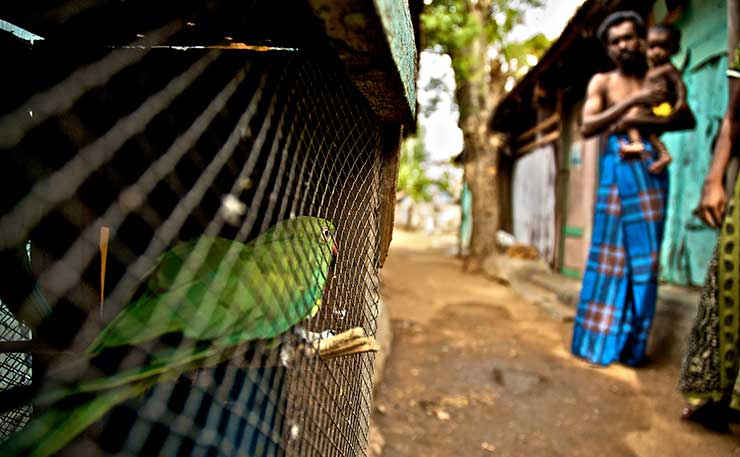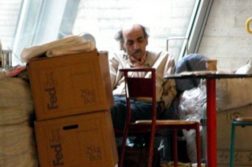Australia’s asylum seeker path is unsustainable, writes John Preston. We have to find another way forward.
On February 3 this year, the High Court in a majority (but not unanimous) decision found that the Australian Government had acted lawfully setting up the offshore detention facility in Nauru.
This decision means that the government is legally entitled to return 267 asylum seekers currently in Australia for medical, mental health or other reasons to the facility.
The High Court’s decision sparked a wave of protests around the country in support of the asylum seekers remaining in Australia and the rise of the #LetThemStay movement.
In a statement published in News Limited regarding the decision, Human Rights Law Centre’s director of legal advocacy, Daniel Webb, said: “The legality is one thing, the morality is another. Ripping kids out of primary schools and sending them to be indefinitely warehoused on a tiny remote island is wrong….”
At the recent New South Wales ALP State Conference, asylum seeker advocacy and a call on the leadership to revisit the ALP’s asylum seeker policy was an enduring theme throughout the weekend.
There is considerable momentum in the community for a more humanitarian approach to Australia’s asylum seeker problem and the ALP would be well advised to consider this in the lead up to this year’s federal election.
Couched in terms of saving asylum seekers’ lives and dismantling people smugglers’ business models, current bi-partisan asylum seeker policy has had undeniable success since its formal imposition by the Abbott Government immediately following their resounding election win in September 2013.
But is the time ripe for another way forward on this Gordian knot of a tragedy amidst a growing international crisis?
WAY BACK in December 2013, newly minted Senator for New South Wales, Sam Dastyari gave his maiden speech to the Federal Senate. Dastyari is an Iranian immigrant whose family fled their home as refugees in the late 1980s, when Sam was 5-years-old. His family made their home in Australia and, with Sam’s appointment to the Senate, the Dastyari story is a good one.
Dastyari has called for a new debate on the plight of asylum seekers and a fresh look at Australia’s asylum seeker policy. In that vein, and motivated by several years of complete frustration with the tone of Australia’s asylum seeker debate, what follows are a few thoughts on this intractable issue.
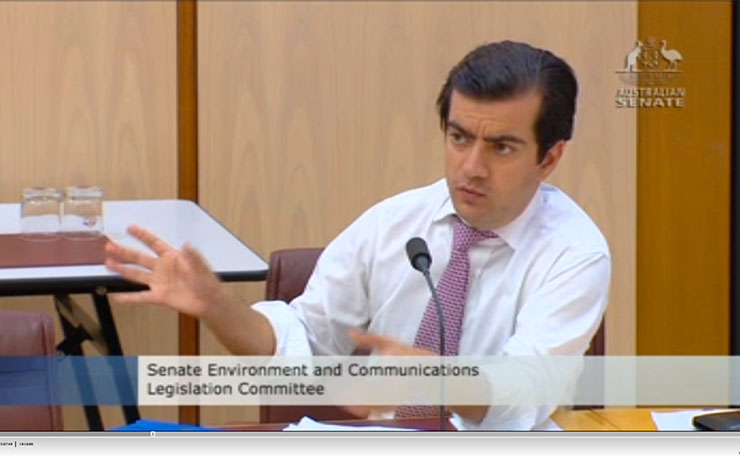
This is by no means a complete policy statement and much work needs to be done to bring this thinking from nascent ideas to formal policy.
So first some background.
The opening statement of the Australian Human Rights Commission Asylum Seekers, Refugees and Human Rights Snapshot report states that, “For over 20 years successive Australian governments have adopted various policies aimed at deterring asylum seekers from arriving by boat. During this period mandatory immigration detention and offshore processing have been key policies in attempts to reduce the number of boat arrivals.”
The basis of Australia’s asylum seeker policy is narrowly focused on “removing the people smuggler’s business model” and there has been a parallel escalation of punitive conditions for entry (or non-entry) into Australia.
The language – ‘business model’, ‘illegal immigrant’ etc. – dehumanises asylum seekers and demonises the victims. Certainly there has been a sincere attempt from all sides of politics to stop the staggering loss of life of asylum seekers at sea, but the current policy is aimed at deterring the victims and intimating that what they are fleeing to is at least as bad or worse than what they are fleeing from.
The punitive premise of this policy position perpetuated over that 20-year period is fundamentally wrong. Australia has the moral obligation and the economic capacity to develop permissive and empathetic policies to support the resettlement of the world’s most disadvantaged people.
“Australia has resettled around 800,000 refugees since World War II, building one of the world’s most successful multicultural societies,” says the Australian Human Rights Commission. That Australia has encouraged and facilitated such extensive and successful migration over a relatively short period of time is a fact that is not lost on prospective refugees.
The idea that, rather than welcoming and allowing them to become part of this successful multicultural society, Australia will prohibit their arrival; forcibly relocate them to regional centres; and, never allow them to settle here is completely at odds with their image of our country.
At the risk of perpetuating the practice of reducing asylum seekers to numbers and statistics, let’s look at who these people are and what motivated them to risk their lives at sea to get here.

Afghani asylum seekers
For Afghani asylum seekers, the Cost of War Project has published the following findings:
- There are an estimated 447,547 internally displaced persons (IDPs) in Afghanistan
- As of 2012, there remained 1.8 million Afghan refugees in Pakistan, just over 1,000,000 in Iran and around 90,000 in other neighbouring countries
- Many IDPs and return refugees are unable to resettle in their place of origin and live in informal settlements in Kabul and other cities
- Over half of all Afghans do not have clean water and 63 per cent lack effective sanitation
- One third of Afghans survive on less than $1 a day
- Another third of the population is ranked just above this extreme poverty marker
- Afghanistan has the second highest maternal mortality rate in the world
- Afghanistan has the highest rates of under-5 mortality in Asia, with levels comparable to other countries experiencing prolonged crises, such as Somalia and the Democratic Republic of the Congo
- There are an average of 55 health personnel — including doctors, nurses, and midwives — for every 10,000 inhabitants.

Sri Lankan asylum seekers
The complex nature of the Sri Lankan Asylum Seeker challenge is described by Paul Komesaroff, Monash University; Paul James, RMIT University, and Suresh Sundram, University of Melbourne in their article for The Conversation as follows:
“The million or so people who left South-east Asia after the wars in Vietnam, Cambodia and Laos were not fleeing straightforward oppression: they were leaving behind sites of trauma and despair that had become too painful.”
“The flight of Sri Lankan citizens — Tamil, Sinhala and Muslim — after the conclusion of the recent civil war largely fits this pattern. The alleged autocratic nature of the regime, continuing human rights abuses and threats to democratic processes, the freedom of the press and the independence of the judiciary may well exist, but they are not the reasons why thousands of people are prepared to risk their lives to leave their homeland.”
A common allegation leveled at Sri Lanka’s asylum seekers heading to Australia is that they are largely coming for economic reasons. Komesaroff, James and Sundram’s hypothesis is that the reasons are far more complex than pure economics, and that there is no future for Sri Lankan asylum seekers in their home country.
“They do not see a future for themselves there. They are leaving because their hope, depleted by decades of conflict, has not been restored by the cessation of hostilities and the restoration of some level of material wealth.”
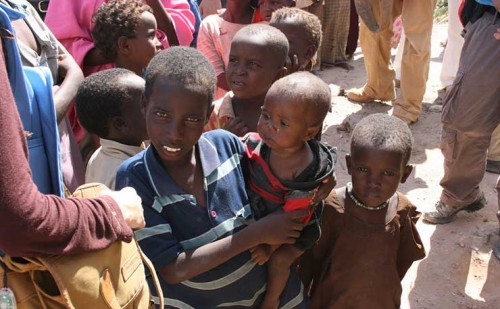
Somalian asylum seekers
For Somalia, Refugees International indicates: “As of September 2013, there were more than 1.1 million Somalis displaced internally and nearly one million refugees living in neighbouring countries such as Kenya, Ethiopia, and Yemen.
“The government installed in 2012 controls only a fraction of the country, and those areas remain fragile in the face of tension between competing warlords and frequent attacks from the Al Shabab terrorist group.”
The plight of Somali’s massive volume of displaced peoples is well documented and few people could truly remain unmoved by the graphic brutality that is the cornerstone of Somalia’s tragic domestic circumstances.
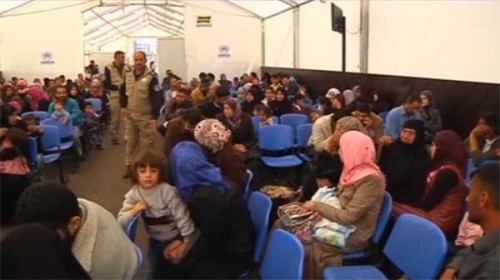
Syrian asylum seekers
In Syria, Refugees International reports: “As of July 2013, more than 1.5 million Syrians have registered as refugees in neighbouring countries, and refugees already in Syria from third countries are being displaced again in growing numbers.
“Best estimates suggest that 4.25 million Syrians are internally displaced, while up to 6.8 million inside the country may be vulnerable and in need of humanitarian assistance.”
The United Nations Population Fund similarly reports that: “As the conflict in the Syrian Arab Republic is now well into its third year, around 9.3 million people are reported to be directly affected by the crisis, more than 5 million Syrians have been internally displaced, and over 2.2 million refugees have poured into neighbouring countries, of which more than 500,000 are women and girls of reproductive age and 41,000 are pregnant. The United Nations expects another 2.25 million more to be displaced within the Syrian Arab Republic and an additional 2 million Syrians to become refugees in 2014.”
Television news and Facebook feeds are full of horrific images from the Syrian crisis. Although later claimed to be an overreach, this time last year a troubling image of 4-year-old Marwan was posted by Andrew Harper of the UN. Despite the overreach, this serves only to highlight the unimaginable conditions being experienced in this most current of war torn countries.
We have not even begun to see the incredible volume of refugees searching for asylum in our regions in the near future from this conflict.
So what can we do?
These are all undeniably desperate people – people with whom we can only vaguely empathise given our comfort and privilege living in Australia. And yet we, who can afford both materially and morally, to do so much, do so little. Is there another way?
A peculiar recent phenomenon of our wealthy, consumer-driven society is the concept of the pop-up business.
Pop-ups are typically of short duration, in high ‘traffic’ areas, in low-rent premises – usually paid upfront – and are used to sell or launch products, be a presence during special events, generate awareness, move inventory or test ideas.
Perhaps this concept can be adapted for our overseas aid program.
A marquee; card table; satellite-phone; and an Internet connection located in the middle of a refugee camp in Kenya, Lebanon, Jordan or Pakistan etc. staffed with Immigration and other Federal Government officials facilitating the processing of Asylum Seekers at source. Yes, UNHCR do this work already for those nations signed up to the appropriate conventions but, in this case, we are specifically addressing the needs of a small number of asylum seekers who hope that Australia offers them a possible safe refuge and new start.
The goal is to provide those who apply and pass initial checks with safe passage to Australia by chartered aircraft or boat. No more people smugglers required. An ultimate goal is to offer permanent residency or citizenship.
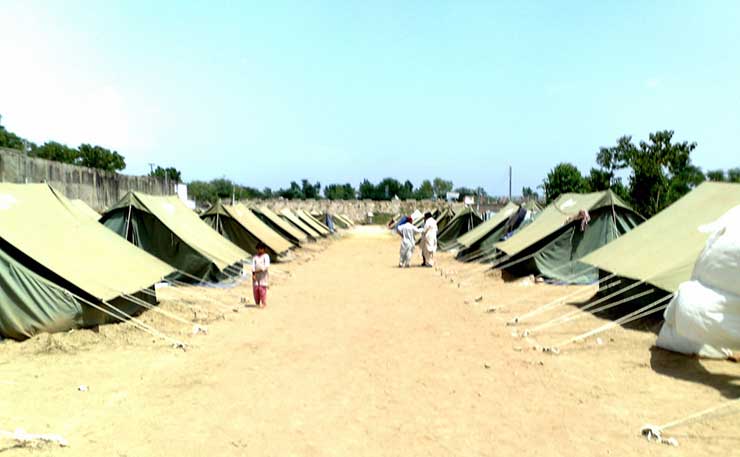
As well as at source countries, this facility could also operate in transit countries. Most countries currently used as transit stops by asylum seekers are unable or unwilling to deal with the refugee problem on a permanent basis on their own, and would be delighted to see a solution that involves the expeditious transit of asylum seekers through their shores.
Obviously there are sovereignty issues that need to be thrashed out with host countries, but there are already diplomatic protocols that can be adapted and the pop-up concept would hardly impose long-term imposts on the host countries.
But what do we do with the asylum seekers when they arrive on our shores?
Our history is replete with the successes of displaced people (asylum seekers of their era) contributing significantly to the prosperity and success of this nation (Sam Dastyari is but one). We need to get back to an understanding of what is good about what we have achieved and how that will be enhanced with an expanded intake of refugees.
In a November 2012 article for Australian Policy Online, Luke Condon from The Allen Consulting Group said: “There is a strong imperative for coordinated action to address current and looming skill shortages in the wider agricultural sector”. The same can be said in other non-agricultural sectors.
By identifying labour shortages in rural and regional areas, asylum seekers, many of whom would have expertise in the areas where we have shortages, would receive meaningful and valuable work – giving them a purpose and a faster track to integration.
Any initial government investment in this scheme would be quickly repaid with increased productivity.
Through intelligent policy development, recognition of prior learning for qualified asylum seekers (Doctors, engineers, scientists, etc.) could be fast-tracked and accredited experts would have the opportunity for immediate employment in an expanding marketplace. A considered expansion, with the goal of permanent employment, of the 457 visa scheme should also be considered.
Clive Brooks in his article Understanding Immigrants and the Labour Market says: “Quite a large number of Australian studies have looked at the impact of immigration on the unemployment rate and all have found that overall immigration, despite the fears of some commentators, does not lead to increases in the unemployment rate.”
Yes, there would be the expected “they’re coming here and taking our jobs” protests, but studies like the above have shown this is baseless, particularly when the relatively small numbers of people we are referring to is considered (Australian Department of Immigration and Border Protection publications indicate only a little over 18,000 “Irregular Maritime Arrivals” came to Australia in 2012-13). This is just not that big a problem.
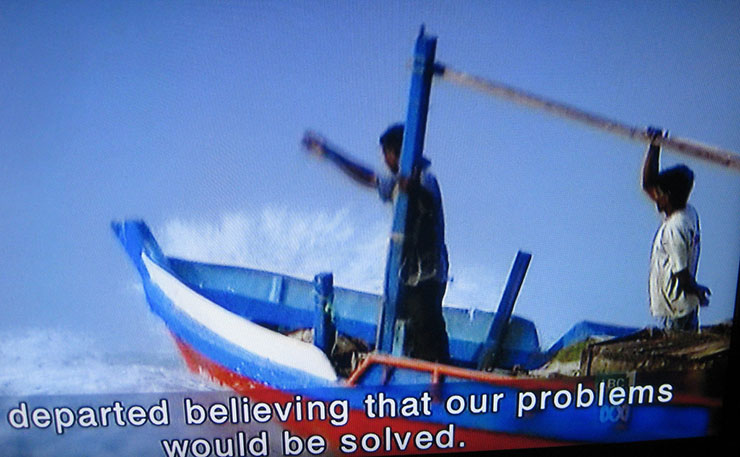
Both Sydney and Melbourne have large populations of immigrants. Far from being squalid enclaves of isolated and isolationist groups, these areas are, arguably some of the most interesting, culturally diverse and bustling areas in our cities.
Yes, there are social issues and crime can be higher than the norm, but in general, what you witness in these areas is people going about their business, setting up small and medium enterprises and generally becoming that diverse cultural mix that epitomises our successful Australian community.
Disappointment with the major parties’ refusal to take up the moral challenge and address this issue from a fresh policy perspective is, anecdotally at any rate, becoming more prevalent. Both parties indicate they intend to continue to support current policies.
Despite expectations that Bill Shorten might have revealed humanitarian changes to ALP policy during his speech to the National Press Club in Canberra recently, no mention was made of this issue.
Labor remains cornered by former Prime Minister Rudd’s late adoption of the PNG solution and fear that a quantum change in ALP policy in this area will be criticised roundly on the floor of Parliament. And the Coalition’s position on this issue is plain: “We will not succumb to pressure, to moral blackmail” and “[w]e will ensure these camps are run fairly, if necessary firmly”.
But Australia can and should address this issue with new vision. Whether that is done by exploring ideas like the ones above, or through some other means Australia is ready for change.
The asylum seeker issue will not go away. Continued unrest in Syria and the increasingly likely potential for environmental refugees from our own region guarantees that the problem can only worsen if not addressed.
A clear indication from the major parties that new and positive thinking on this issue is happening is well overdue, and whilst the Australian public may get the opportunity to judge this thinking at the next election, I’m not sure our asylum seeker brethren can wait that long.
Donate To New Matilda
New Matilda is a small, independent media outlet. We survive through reader contributions, and never losing a lawsuit. If you got something from this article, giving something back helps us to continue speaking truth to power. Every little bit counts.

